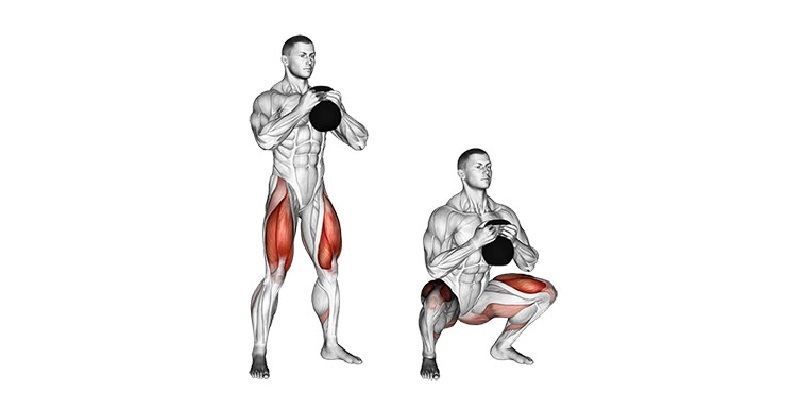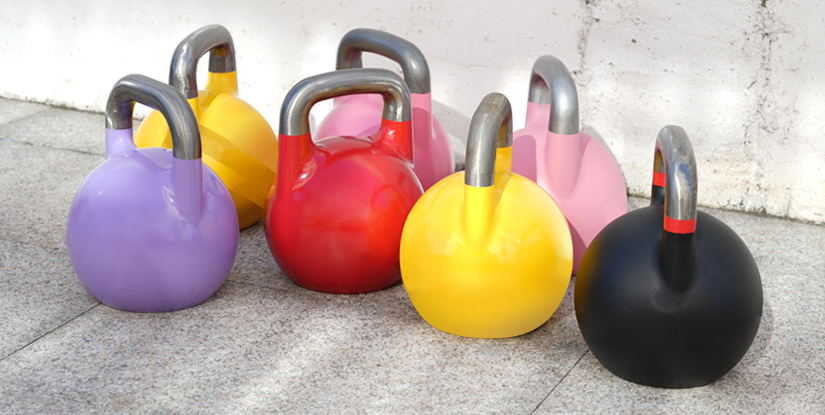The first time I looked up competition kettlebell colors, it was because I was seriously confused.
I’d just picked up a used 24kg kettlebell — solid price, good shape — but the thing was painted bright yellow. And I thought, hold on… isn’t yellow for 16kg?
For a second, I panicked. Was it mislabeled? Did I buy the wrong weight? Was this some off-brand knockoff?
Turns out, not all manufacturers stick to the official color codes. Some just paint their kettlebells however they want — even for commercial gym gear. And when you’re training seriously, or trying to build a consistent set, that can get frustrating fast.
That moment sent me down the rabbit hole of what these colors actually mean, why they matter (sometimes), and when it’s okay if things don’t match.
What the Standard Competition Kettlebell Colors Should Be
After the yellow 24kg kettlebell incident, I decided to look up what the actual competition kettlebell colors are supposed to be. Turns out, there’s a legit international standard — especially if you’re training in a commercial gym or a gym that takes kettlebell sport seriously.
Each color maps to a specific weight, and it’s the same worldwide. Judges use it. Athletes rely on it. It’s basically the kettlebell version of color-coded bumper plates.
Here’s the official lineup most commercial setups follow:
| Weight (kg) | Color |
|---|---|
| 8 | Pink |
| 12 | Blue |
| 16 | Yellow |
| 20 | Purple |
| 24 | Green |
| 28 | Orange |
| 32 | Red |
| 36 | Grey |
| 40 | White |
| 44 | Silver |
| 48 | Gold |
So yeah — if your 24kg bell is yellow, that’s technically off. It should be green. Color is supposed to match weight, and that’s not just for show. It helps with fast weight selection and consistency, especially when you’re lifting hard and heavy in class or comp prep.
But here’s the catch: some manufacturers just don’t follow it. Especially on older models or discounted bells. Doesn’t mean your kettlebell is useless — but if you care about building a matching pair or running clean sessions for clients, color matters.
Knowing the standard helps you buy smarter and train smoother.
When Kettlebell Colors Don t Match the Standards And What to Do About It
After I found out that my 24kg bell was supposed to be green, not yellow, I went down the rabbit hole a bit.
Turns out, not every brand sticks to the official competition kettlebell colors — especially the non-elite or budget-friendly options you still find in some commercial gyms. Some brands just go with what looks good or fits their logo design. Others might’ve followed older color codes. Some honestly don’t care at all.
So yeah — the colors being “off” isn’t always a red flag. The big question is…
Does It Actually Affect Your Training?
Honestly? Not really.
If the weight is accurate and the dimensions match standard comp style, you’re good to go.
Here’s what I look for now — and what actually matters when training with comp bells:
- Balance: Basically, does it feel solid in your hands, or does the weight drop straight to the bottom like a rock?
- Handle feel: And yeah, does the grip feel smooth and comfy — or are your cleans and snatches turning into a fight every rep?
- Finish: Powder coat? Raw steel? Smooth paint? All of that affects how it feels in your hand and during volume sets.
Color? It’s mainly just for quick spotting and clean organization on the gym floor. That’s it.
So don’t stress if your 28kg is orange instead of… well, also orange. But you get the idea. 😉
Planning to Match a Pair Later?
Now, if you’re like me and plan to buy another matching bell later for double work or just to build symmetry on the rack — that’s where things get a little trickier.
Here’s how I plan for that now:
- Stick to the same brand (especially comp-grade brands that follow the standard)
- Check the handle size and feel — some handles are thicker or slicker depending on the coating
- Make sure the bell height and width match — even a slight difference can feel weird in cleans and jerks
If the color doesn’t match? No worries. I’ve seen lifters slap on colored wrist tape or vinyl rings to mark the weight clearly.
Bottom line — color’s helpful, not critical. Function first, always.
Why Kettlebell Dimensions Matter in Competition Style
One of the best things about competition kettlebells — and honestly, one of the reasons I prefer them in a commercial gym — is this:
Doesn’t matter if it’s 8kg or 32kg — the bell’s still the same size.
But honestly? Back then, I figured that didn’t really matter all that much. But once I started training heavier? Game-changer.

Here’s why that consistent size makes a difference:
- The handle height and width don’t change.
- The window (that space between the handle and bell) stays the same.
- Even the shape and footprint are identical across all weights.
So whether I’m using an 8kg for warmups or a 32kg for grind sets, my form doesn’t need to adjust.
- My clean stays tight.
- My rack position stays locked in.
- And my snatch path stays efficient.
This is especially helpful when coaching newer lifters or programming for group sessions in a commercial setting.
Everyone moves the same way — no surprises because of bell shape or awkward sizing.
That’s also why switching between adjustable bells or old-style cast iron kettlebells can be frustrating. The size throws off your groove — and that matters when you’re chasing reps, timing, or technique under fatigue.
So yeah, standard dimensions? Not just a fancy comp feature — they make your training smoother, safer, and way more consistent across the board.
Adjustable vs Competition Kettlebells: My Take as a Commercial Gym Buyer
I’ll be honest — I’ve tried both.
Adjustable kettlebells are kinda cool at first. You twist, swap plates, and boom — one bell becomes ten. It sounds efficient. But when I started outfitting gear for a commercial gym, my whole perspective changed.
Now? I only buy competition-style kettlebells. And here’s why:
- Same size, every weight. No learning curve. No awkward setups.
- Built like tanks. These bells take drops, chalk, and sweat like champs.
- Perfect for group training. When you’ve got 5+ people moving through stations, you don’t want anyone fumbling with knobs or latches mid-set.
- Progression makes sense. You can line up your 16kg, 20kg, 24kg — all exact same shape, just heavier. Easy for programming and coaching.
Adjustables might save some space, sure. But in a high-traffic, high-volume training space? They just don’t hold up — physically or logistically.
So if you’re running classes, training clients, or just want reliable gear that won’t fall apart after six months — comp-style wins every time.
Simple, clean, durable.
Exactly what you want on the floor of a serious training facility.
When I first saw that yellow 24kg bell, I thought I messed up. But now? I just smile and lift.
In the world of competition kettlebell colors, things should follow the rules — but sometimes they don’t. That doesn’t mean the bell’s bad or broken. It just means someone skipped the paint memo.
If the size is right, the weight is real, and the balance feels good — you’re golden. (Even if your 24kg isn’t.)
At the end of the day, whether you’re coaching groups or building out a full training floor, it’s not about the color. It’s about the work. And 24kg still hits — no matter the paint.

Hi, I’m the editor here at Leadman Fitness. We’re a manufacturer focused on producing top-quality barbells, plates, kettlebells, dumbbells, and strength training gear. I’ve been into sports and fitness for years, and I know my way around all kinds of gym equipment—both from using it and helping create it.
I spend a lot of time understanding the real problems people run into in the gym—whether it’s beginners trying to pick the right gear or experienced lifters looking for something more durable. I stay in close touch with our production team and talk directly with other equipment makers, so we’re always improving based on what real lifters and coaches are looking for.
What I share comes from hands-on experience—stuff that actually helps people train better, not just in theory, but in real gyms.
